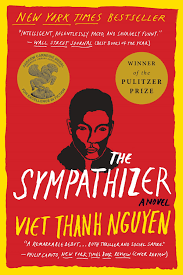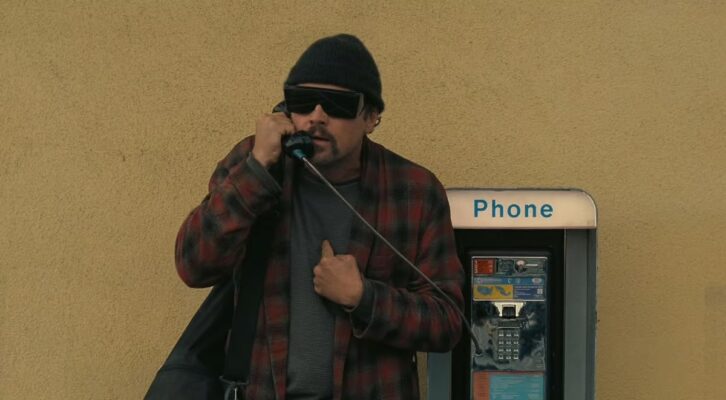A stranger comes to town. He is stern, quiet, with a whiff of criminality, seductive to women and men alike, his life like an arrow shooting him onward. He meets a family, he befriends a boy, he almost falls for another man’s wife, and then he saves them all in a burst of gunfire. Rider from Nowhere first appeared in serial in Argosy magazine, but by the time it reached book form, it bore the name of its emblematic lead character, Shane.
Jack Schaefer’s 1949 novel sold 12 million copies. George Stevens’ blockbuster 1953 movie led a pack of Western films racing across the 1950s, including The Gunfighter, Man of the West, High Noon, The Man from Laramie, 3:10 to Yuma, and many more. Shane has been claimed as a favorite movie by Woody Allen, Anthony Hopkins, and Professor X. Even Marvel’s 2017 Logan pays homage to Shane, a final monologue ripped verbatim from the original film.
If Schaefer is largely forgotten today, his character blazes on in the American psyche.
“A gun is as good—and as bad—as the man who carries it,” claims Shane. Then he shoots down greedy outlaws to prove it. Guns don’t kill people. People kill people. Historians have drawn clear lines between classic Westerns and NRA marketing campaigns, between Shaefer’s vision of masculinity and the need to possess your own rifle for the moment when your inner Shane must rise up to rescue your society.
The lone rider’s stark silhouette, magnified by screen and time, hides his creators’ complicated feelings about his existence. Jack Schaefer would never again write a book as hopeful about the American West. Shane’s film director, George Stevens, actually intended to impress on audiences the horrors of gun violence. Stevens rigged the film’s two victims with hidden wires, to jerk them backwards when shot. He fired a high-caliber gun into a can to amplify its sound.
In a 2017 interview in The Nation, Hernan Diaz situates the heroic unambiguity of Shane within an overall failure of the Western novel to achieve great literature in its heyday.
Name any Western dime novels without the help of Google, challenges Diaz. “You’d expect [the Western] to be central to the American literary canon because it’s so perfect as an ideological tool,” he says. “It’s the culmination of individualism, it’s an ideological tale of the birth of the nation, it romanticizes genocide… And yet most people will be hard-pressed to name three Western writers before Cormac McCarthy and Larry McMurtry.”
I would have named Shane. I read it in sixth grade, in 1980s Vermont, unconscious of its sexism and its whiteness. I read it like the boy who is its narrator, who is hungry for experience, for adult knowing. Although Shane’s worldview is dated, the novel projects the timeless quest of innocence in our bloody world. Shane altered the Western landscape in my mind into an open plain where lives were writ large, and shattered and solved by violence. Canyons and buttes, and America’s past and future fused to the tragic, to the isolated figure of Shane, casting his long shadow.
One day, I would move to the West myself. I would sit in a park, reading, in downtown Los Angeles when a plane flew overhead. It was right after 9/11. I looked up. We all looked up, everyone sitting by that bubbling fountain beside the skyscrapers. The dark shape of our doom droned across the sky above. We expected it to smash into a building and the building to fall.
“They’re not supposed to do that,” muttered a security guard near me, meaning no one was supposed to fly close to downtowns anymore, not after the attack in New York. Then she shook her head and sighed.
That fall, I first had an idea for a Western novel of my own, for a stranger who comes to town, carrying her complicated past, hoping for a shot at redemption, and maybe retribution, too. Instead of riding a horse, Edith walks along in a wrinkled skirt and sneaker boots, and instead of being young and handsome and male, she is old and a woman. But she is also a symbol of 20th century white America, an America finally erased by the planes flying into the World Trade Center. My grandmother’s America. Shane’s America. Twenty years later, after our country nearly broke into civil unrest, I wrote the novel and called it Goldenseal, after a cure that was never taken.
If I may argue with Diaz’s earlier declaration, the Western should not be viewed as a stunted genre from an earlier era, but a vibrant, flexible strand of American literature, forever tied with individualism and our route west, to the cost of this, and to figures who ride the margins of our society, revealing to us its true edges.
Shane lives on in the novels and collection below, not exactly the man he was, or even a man at all, but finding his way. If Jack Schaefer made the Western horizon into an infinitely unreachable elsewhere, these remarkable 21st century books remind us to take stock of where and how we’ve arrived.

Tod Goldberg, The Gangsterland Series
When Chicago hitman Sal Cupertine goes into the witness protection program and emerges a Bruce Springsteen-quoting rabbi in Las Vegas, the Western novel realizes a powerful new incarnation in Tod Goldberg’s now five-book series. “Tod Goldberg is part-Chandler, part-shaman, and all-killer,” writes Brad Meltzer of the series’ culminating 2023 novel, Gangsters Never Die. At the same time Goldberg’s comic noir narration subverts the self-seriousness of Shane, his multi-book tale of a gangster’s exile, reinvention, and belonging becomes a poignant recasting of the “rider from nowhere.”

Mohsin Hamid, Exit West
Although Mohsin Hamid’s 2017 novel starts in another country, his lead character Nadia possesses Shane’s impeccable style from her first scene, speeding off on her motorcycle in a black helmet. Hamid’s gleaming, allegorical novel follows Nadia and her new boyfriend Saeed, as wartime violence displaces their young lives. Together they journey across the globe, always living at the edges, in refugee camps, squatting in a second home in London, and eventually landing in a Bay Area settlement where they finally, tentatively put down roots. The antagonist in Exit West is inhumanity itself, lured to ordinary lives by violence and desperation, and defeated by love, faith, and community.

Annie Proulx, Close Range: Wyoming Stories
Themes of isolation, hard-headedness, hazard, and failure pervade this 2000 collection by Annie Proulx. Her most famous story, “Brokeback Mountain,” reinvigorates Shane’s forbidden romance between its leading man and married Marion Starrett. When Proulx’s Jack Twist and Ennis Del Mar meet as shepherds on a remote mountain and fall for each other, the Western horizon becomes a brief, lost paradise for them, only to close behind them once they return to society.

Viet Thanh Nguyen, The Sympathizer
Viet Thanh Nguyen’s layered 2015 novel centers on an anonymous loner who is also a spy, a communist sympathizer living in Los Angeles at the end of the Vietnam War. A novel that simultaneously detonates American mythmaking about the East and shows the West through fresh eyes, The Sympathizer questions the matter of killing for “good reasons,” and the cost on the killer’s psyche. If Shane is a focused recounting of one American family’s fight for their land, The Sympathizer is its morally complex opposite, refusing to side with anyone, but revealing instead the multiplicity of desires, greed, and ideals behind our wars.

Louise Erdrich, The Round House
At first glance, a novel about an assault on the wife of a Native American judge, her family’s grief, and the sluggish justice system bears no resemblance to Shane. But dig deeper into Louise Erdrich’s devastating 2013 book, and you’ll see a boy, a crime, complex filial pride, a loner, personal retribution, and even a manly tearing-out-of-trees that inverts Shane’s famous stump removal scene. Most importantly, the narrator in both novels is still a child, who longs to believe in heroes that confront the world’s darkness head-on and do not shy from the consequences.

Hernan Diaz, In the Distance
Hernan Diaz’s magnetic 2017 debut reverses and shifts so many Western tropes, the novel is like Shane’s reflection on water, shadowed, splintered, and shimmering. Diaz’s central character, Håkan, leaves Sweden with his older brother in the 1850s to make a new life in America. But the boys lose each other and Håkan ends up on the wrong ship, landing in San Francisco. There, he decides to travel east, surviving hardship and encountering various figures and emblems of Manifest Destiny, heading in the opposite direction. In the Distance is an entertaining yarn, a harrowing journey, and a meditation on the mistakes and hopes of our history.
***


















